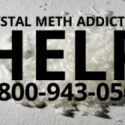How the Prescription Opiate Epidemic Is Affecting Seniors in Rehab Centers
It is no surprise that the number of prescription drug abusers has been growing steadily and so have the rates of overdose death. It is an increasingly dangerous situation that affects people in all ages, socioeconomic groups, and races. However, despite the attention the opiate epidemic is getting in general, one group of people is being steadily ignored: the elderly.
A study in the Journal of Aging Health reports “The number of Americans aged 50+ years with a substance use disorder is projected to double from 2.8 million in 2002–2006 to 5.7 million in 2020.” Seniors in the United States are abusing prescription painkillers at an upsetting and rising rate and the issue isn’t getting proper attention.
The increasing rate of substance abuse among those over 50 creates two main problems. Firstly, if these people remain untreated, a large portion of the senior age group will be ravaged by addiction and related health concerns. If it is addressed and treated, the demand on rehab centers will be quite large. Effective programs tailored to the emerging needs of this age group will need to be developed.

A number of factors make the senior population vulnerable to opiate addiction.
If you are a senior citizen who is using prescription painkillers or other opiates recreationally, or non-medically, you need to seek treatment. Finding treatment that reflects your specific needs as a part of an older generation can seem challenging, but the experts at RehabCenters.com can help. Call 888-646-0635Who Answers? and speak with a representative who can answer all of your questions and direct you to appropriate treatment. Don’t give up on yourself; get the help that you need and deserve.
Prescription Painkillers and Seniors
Seniors, are a vulnerable group when it comes to drug abuse. The rate of overdose deaths among the population aged 55 to 64 increased sevenfold between 1993 and 2012 and the group with the highest death rate, according to research referenced by the American Association of Retired Persons (AARP), was the 45-to-54 age group, which experienced a death rate four times greater than either teenagers or young adults.
The growing rate of overdose is a direct product of an increase in overall opiate addiction among this population. Many different factors contribute to rates of addiction. Individuals over age 50 tend to be prescribed more medication than those in other age brackets. In addition, this group also tends to experience undiagnosed and untreated mental health conditions—like anxiety and depression. People in this age group also tend to find themselves increasingly isolated.
Because of these factors, larger and larger numbers of seniors find themselves in emergency medical situations and, if they survive, a rehab center may literally prove to be a long-term lifesaver. Because of this, there has been a significant increase in the number of seniors accessing the services of rehab centers.
The Impact of Senior Populations
As mentioned earlier, the growing number of seniors seeking treatment means that rehab centers have to provide services that specifically targeted at these clients.
For example, rehab centers that service seniors and the elderly have to provide case management services. Because seniors generally have adult children who no longer live in the home, have retired from work, and may have lost their partners, they tend to have more limited social networks than younger addicts do. This makes it hard to maintain recovery after leaving the rehab center. Case management can link clients with social, psychiatric, and medical resources following their release from rehab.
In a similar vein, rehab centers that service seniors and the elderly now frequently assist clients in building a more widespread social network. Isolation is a part of all addiction, but the situation is acute for older addicts.
The growing number of seniors with an opiate addiction has forced treatment centers to target their offerings for that population, which has led to a higher degree of service for patients in this age group than has been available in the past.
What to Look For
When looking for a senior rehab center, make sure that the facility offers:
- Individualized senior treatment program
- Case management services
- Training in growing a social network
- Age-appropriate treatment content, delivered at a speed that allows clients to fully assimilate information
- Coping strategy development, which helps one cope with grief, loss, depression and loneliness
- Non-confrontational treatment
Thanks to the steady influx of senior addicts, more and more programs are prepared to offer these services.
For assistance finding a program that can help you or a senior that you love recover from opiate addiction, call 888-646-0635Who Answers?. Help is waiting.










